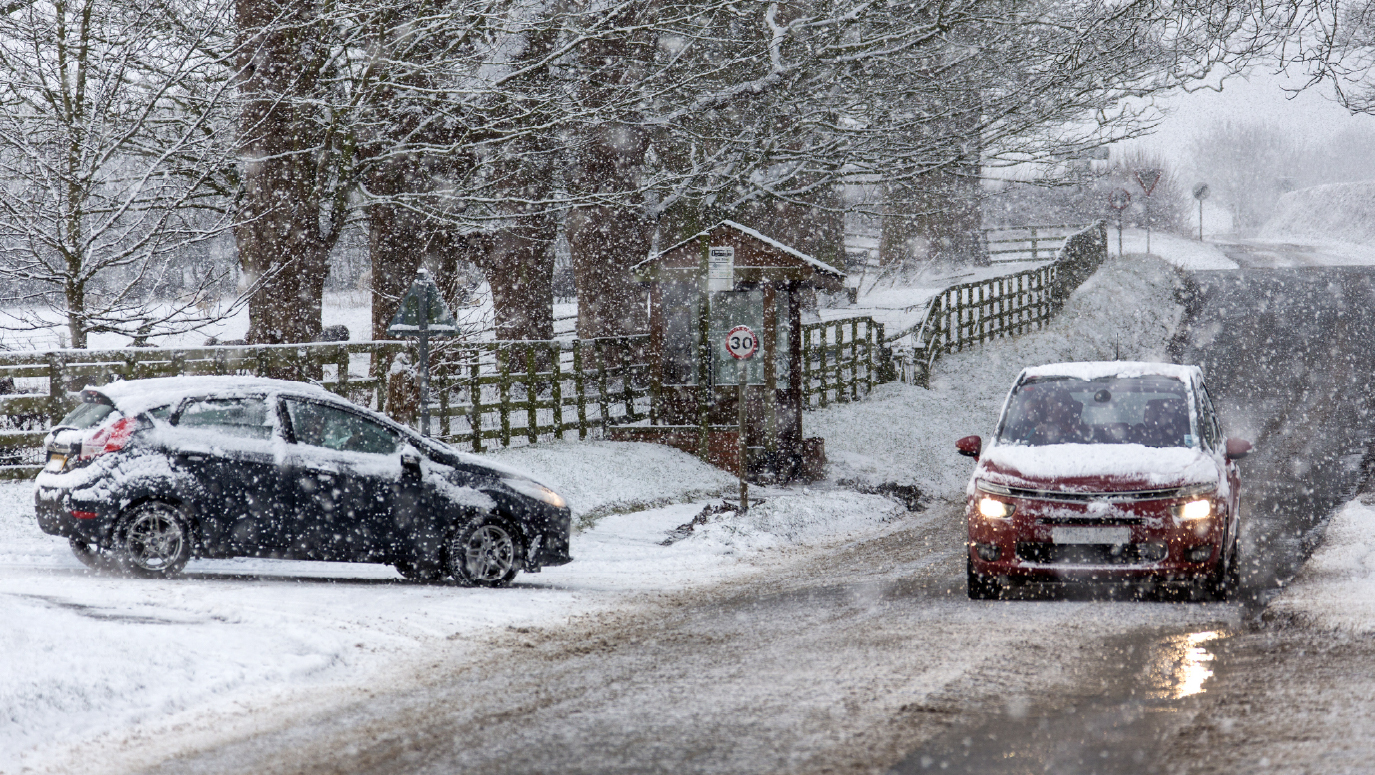Winter. It's the most wonderful time of the year. Well, maybe not for our cars.
You’re much more likely to break down during the colder months. Plus, winter breakdowns have increased by 22% over the past five years. So, while there’s never a good time to be stuck by the roadside, it’s particularly frustrating in sub-zero temperatures.
It's best to stay off the roads altogether when conditions are bad. But, if you do have to drive this winter, here's how to prepare your car, along with some tips on how to drive in snow, ice, and fog.
Prepare your car for winter
If your car hasn't had a service in a while, it's a good idea to get one booked before the weather really turns.
If you're not due a service, make sure you carry out the following checks:
- Lights are clean and working – if you can, get someone to help you check all the lights around your car.
- Windscreen wipers are clean and ready for action.
- Tyres are in good condition – check the pressure and make sure they have enough tread. 1.6mm is the legal minimum, but in winter we'd recommend 3mm tread to help your car grip the road.
- Do you have the right tyres? All-season or winter tyres will offer improved traction. You definitely don't want to leave summer tyres on during the colder months.
- The brakes are working well.
- All your fluids are topped up – especially anti-freeze. Anti-freeze can be mixed with your windscreen wash (the colder it is, the more anti-freeze you'll need).
Pack a winter emergency kit
If you find yourself stranded, you'll thank yourself for a little forward planning. Make sure you've packed the following, should the worst happen:
- A torch and some spare batteries
- A blanket
- Some spare (warm) clothes
- Snacks and a bottle of water
- A mobile phone and charger
- An ice scraper
- A shovel
- Sturdy boots
It's also a good idea to have some flattened cardboard, a bag of sand or cat litter in your boot – they can help you gain traction if you get stuck in the snow.
Driving advice (whatever the weather)
Snow
If snow is coming down thick and fast, it's unsafe to be on the road. Only get behind the wheel if it's absolutely necessary. If you do need to drive, stay as safe as possible:
1. Scrape off all the snow from your windows and lights so you can see clearly. You should also remove snow from the roof, as it could all slide down and cover the windscreen once you start moving, or fly off the back and hit a car behind you.
2. Accelerate gently when it's time to get moving. Pull off in second gear to reduce wheel slip. If you're driving an automatic, try putting it into W (winter) mode if you have it.
3. Leave a large gap between you and the car in front. Skidding is a constant danger.
4. Try to use gritted roads wherever possible.
5. Don't drive over wheel-tracks as compressed snow is icy and more slippery than fresh snow.
6. Don't brake hard. Take everything a lot slower and change gears as smoothly as you can.
Ice
1. If you know it's going to be an icy morning, put a windscreen cover over your car the evening before to reduce problems.
2. Get up 10 minutes earlier so you have more time to de-ice your car.
3. Never pour boiling water onto your windscreen as the glass could crack.
4. Have a scraper and de-icer spray handy for clearing all windows, wing mirrors, and lights.
5. Never pull away unless your windscreen is completely clear. It dangerous to drive with obscured view, so remove all snow and ice from your windows, mirrors, lights, and roof before driving.
6. If your car starts to skid, don't panic and don't slam on the brakes. Calmly take your foot off the accelerator and turn your car in the direction of the skid. Once the car straightens, steer along the road.
7. If you're driving down any steep hills, opt for third or fourth gear to prevent skidding.
Don't forget!
If you drive with an obscured view or snow on your roof, the police can issue a fine which wouldn't be covered by your insurance. Plus, if you cause an accident because you can't see properly, your insurer may not cover the damage to your vehicle.
Don’t leave your car unattended while de-icing. Leaving the engine running with keys in the ignition makes it an easy target for thieves, so any theft claim you make under these circumstances will be rejected by your insurer.
Fog
1. Your dipped headlights should be on if you can't see further than the length of a football pitch (about 100m).
2. Automatic headlights might not work in foggy conditions, so don't rely on them.
3. Fog lights aren't obligatory. If visibility is reduced, then switch them on, but remember to switch them off when visibility improves.
4. Fog can appear quickly, and your visibility can deteriorate in seconds, so watch your speed. Driving slowly will give you more time to react to hazards.
5. If you come to a busy junction and can't see a safe distance, wind down your window and listen for oncoming traffic.
6. In foggy conditions, the inside of your car can steam up, so turn on the air-conditioning to take the moisture out of the air or blast the windscreen with hot air.
Special considerations for electric vehicles
If you drive an EV, cold weather can heighten range anxiety. Your battery performance can decrease by up to 20%, meaning you'll have to keep a closer eye on charging points. Here's how to stay safe and avoid a breakdown this winter:
- Pre-condition your car while it's still plugged in to warm the cabin without draining energy from the battery.
- Plan charging stops along your route.
- Switch to an 'eco' driving setting to conserve energy.
- Try to keep your battery above 20% to avoid performance issues.
What to do if you break down
If you've prepared your car for winter and followed all the safety measures, then you've lowered your risk of breaking down – but it can still happen.
If you're on a motorway
If you break down on the motorway, pull over on the hard shoulder (or one of the Emergency Refuge Areas if you're on a Smart motorway).
Get out of the car on the left-hand side and stand behind the metal barrier. Use blankets and extra clothes to stay warm.
Contact your local highways agency or the police before you contact your breakdown cover provider.
If you're not on a motorway
If you're not on the motorway, and it's safe to do so, stay in the car where it's warmer.
If you've got a full tank of petrol, run the car for 15 minutes every hour until help arrives. It's a good idea to avoid leaving overhead lights or the radio running, as this will drain the car battery.
Contact your breakdown recovery service for emergency assistance as soon as you can.
If it's snowing and very cold, don't try to dig your car out of the snow. You'll stay warm and build up a sweat while you're digging, but once you get back in the car, your body temperature can drop quickly.
In sub-zero conditions, be sure to keep moving to prevent frostbite. Stretch your arms and legs, and huddle with other passengers to share body heat.
Driving in the winter months is all about preparation and precaution. Carry out the checks above, drive at a safe speed, and be aware of the specific hazards each wintry condition brings.




